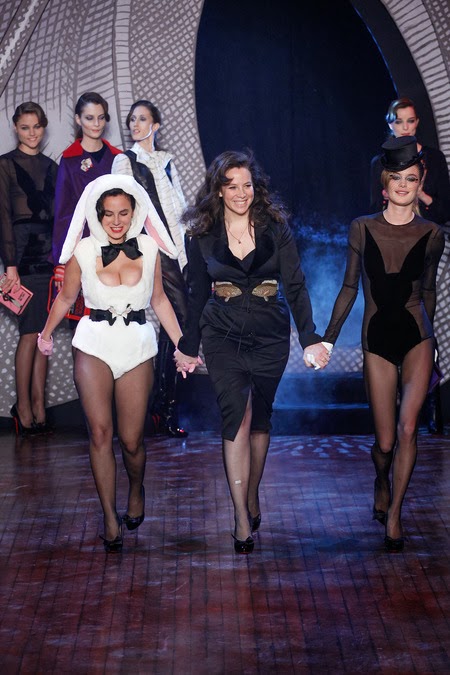
Australian-born Martin Grant showcased his Fall collection on the 1st of March. He launched his first ready-to-wear line in 1982 and was soon recognised as a budding fashion talent. He was awarded the Cointreau Young Designer Award in Sydney in 1988. Martin Grant deliberately avoids the fashion system and chooses to present his collections to relatively small selected audiences, which gradually assembles a loyal clientele.

 His pieces tend to focus upon bespoke tailoring, focus upon the small details and simplicity of lines and form. His collection demonstrates elegances in the manner of timeless silhouettes, understated charm and acknowledgement of the sculpted form. He adheres to the shape of the body to emphasise feminine curves. The clothing he has created tends to be functional, with sharp, geometric and a focus upon structure, yet there is always a feminine delicacy too. Fundamentally, he operates a neutral colour palette and tends to influence his colour scheme in direct correlation to the seasonal directive.
His pieces tend to focus upon bespoke tailoring, focus upon the small details and simplicity of lines and form. His collection demonstrates elegances in the manner of timeless silhouettes, understated charm and acknowledgement of the sculpted form. He adheres to the shape of the body to emphasise feminine curves. The clothing he has created tends to be functional, with sharp, geometric and a focus upon structure, yet there is always a feminine delicacy too. Fundamentally, he operates a neutral colour palette and tends to influence his colour scheme in direct correlation to the seasonal directive. 
 Martin Grant's Autumn collection features clothing with block colouring or with geometric print. The colour palette is attuned to the autumnal season with the majority of his clothing featuring the grey, navy, black and white which is reminiscent of the winter season. The sailor coats, cocktail dresses and gala gowns represent the clothing which is typical to his designer ethos and objective.
Martin Grant's Autumn collection features clothing with block colouring or with geometric print. The colour palette is attuned to the autumnal season with the majority of his clothing featuring the grey, navy, black and white which is reminiscent of the winter season. The sailor coats, cocktail dresses and gala gowns represent the clothing which is typical to his designer ethos and objective.
 The constructions created by Martin Grant successfully carry the beauty and elegance of which he has become renowned. The focus upon tailoring and the demure colour scheme evoke the traditional autumnal themed clothing collection.
The constructions created by Martin Grant successfully carry the beauty and elegance of which he has become renowned. The focus upon tailoring and the demure colour scheme evoke the traditional autumnal themed clothing collection. However, the relatively conventional tailored pieces of his collection are punctuated by the introduction of the fuchsia dress and skirt along with the gold utilised in his patterned dresses and skirts. The input of these colours help to breathe life back into the relatively demure and chaste collection.

 Through the addition of the fuchsia pink, gold and a floor length gown with a rather provocative split, Martin Grant's collection adds a bit of allure to his typical style and grace.
Through the addition of the fuchsia pink, gold and a floor length gown with a rather provocative split, Martin Grant's collection adds a bit of allure to his typical style and grace. 
 Fundamentally, Martin Grant has created a beautiful collection: his clothing is stunning and stylish, and it is filled with items which truly are "Ready-to-Wear" for the Autumn period. Grant truly is one to watch for the mature working woman: his pieces would be a perfect addition to any woman's working wardrobe, or even for networking after-work drinks. Some may believe that he is fulfilling the staple Fall collection desires, however, they fulfil those desires with exceptional sophistication and charm. His collection presents the classics but with a classic and archetypal structured refinement which has come to be expected from his designs.
Fundamentally, Martin Grant has created a beautiful collection: his clothing is stunning and stylish, and it is filled with items which truly are "Ready-to-Wear" for the Autumn period. Grant truly is one to watch for the mature working woman: his pieces would be a perfect addition to any woman's working wardrobe, or even for networking after-work drinks. Some may believe that he is fulfilling the staple Fall collection desires, however, they fulfil those desires with exceptional sophistication and charm. His collection presents the classics but with a classic and archetypal structured refinement which has come to be expected from his designs. 












